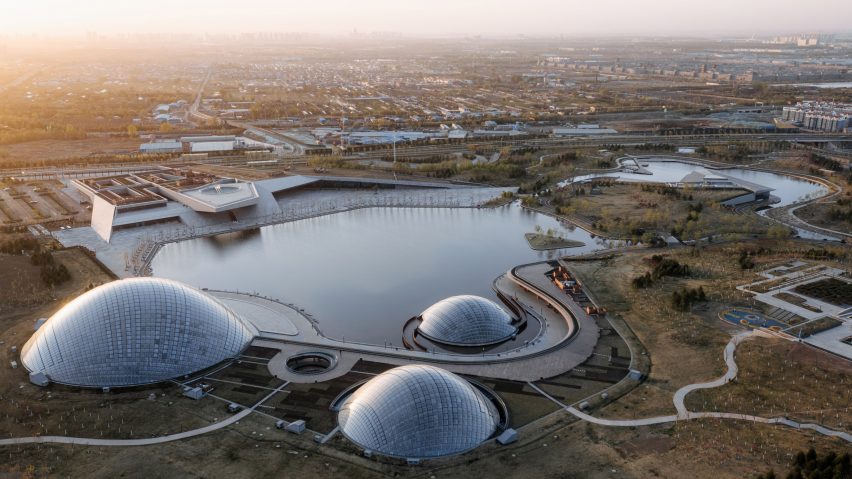
Delugan Meissl completes Taiyuan Botanical Garden with giant domed greenhouses
Austrian firm Delugan Meissl Associated Architects has completed a botanical garden complex in Taiyuan, China, featuring three domed greenhouses positioned on or alongside an artificial lake.
The Taiyuan Botanical Garden occupies the site of a former coal mine in the Jinyuan district of Taiyuan in northern China, which the client wanted to transform into a landscaped park and museum.
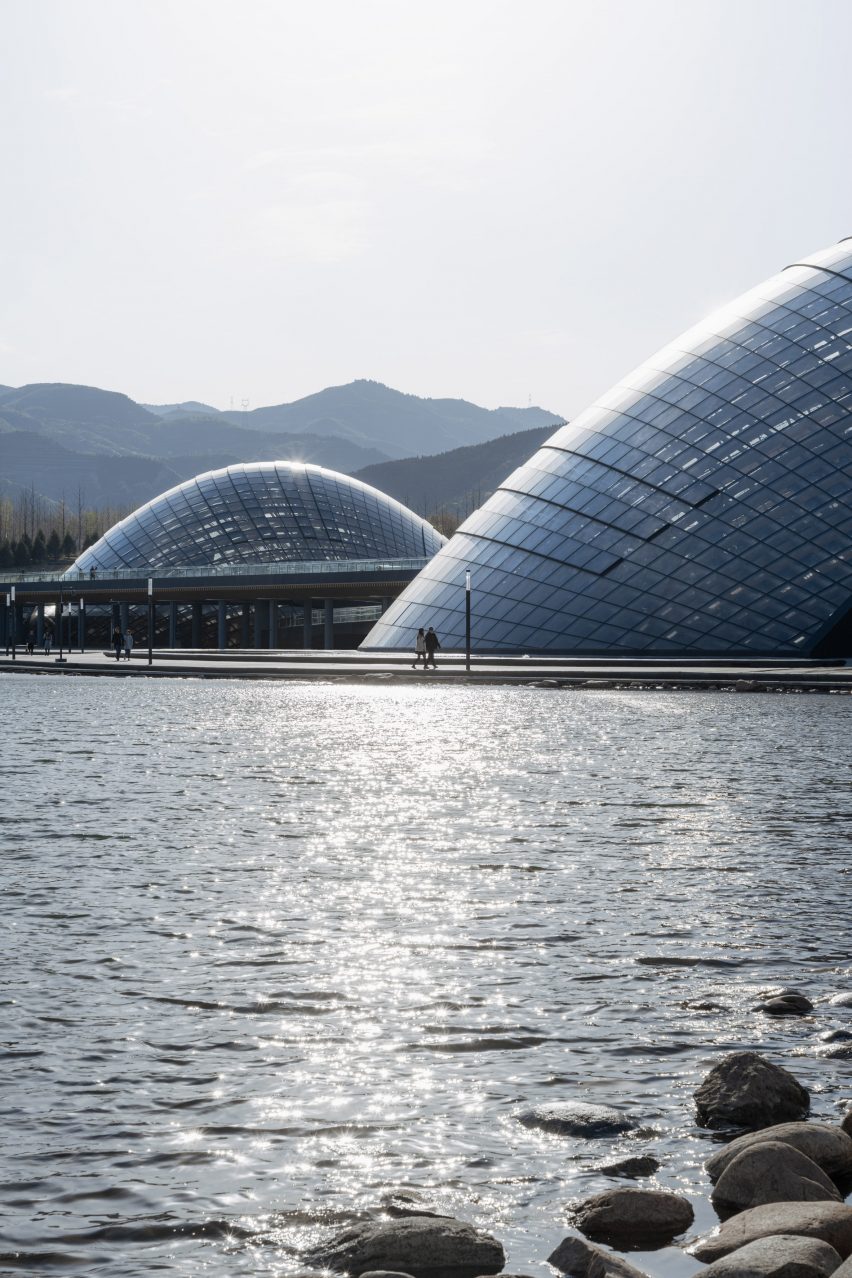
Delugan Meissl Associated Architects (DMAA) oversaw the development of the gardens, which included the creation of an artificial landscape featuring hills, lakes, waterfalls, paths and buildings.
The site's centrepiece is a cluster of three domed greenhouses that provide suitable climatic environments for growing plants from different regions.

Taiyuan Botanical Garden also encompasses an entrance building containing a nature museum and administration facility, along with a restaurant, a bonsai museum and a research centre with a library and staff accommodation.
The greenhouses are placed close to the entrance of the landscaped park and are connected by walkways that extend around the lake.
Each of the three domes was built using double-curved laminated timber beams arranged in two or three intersecting layers.
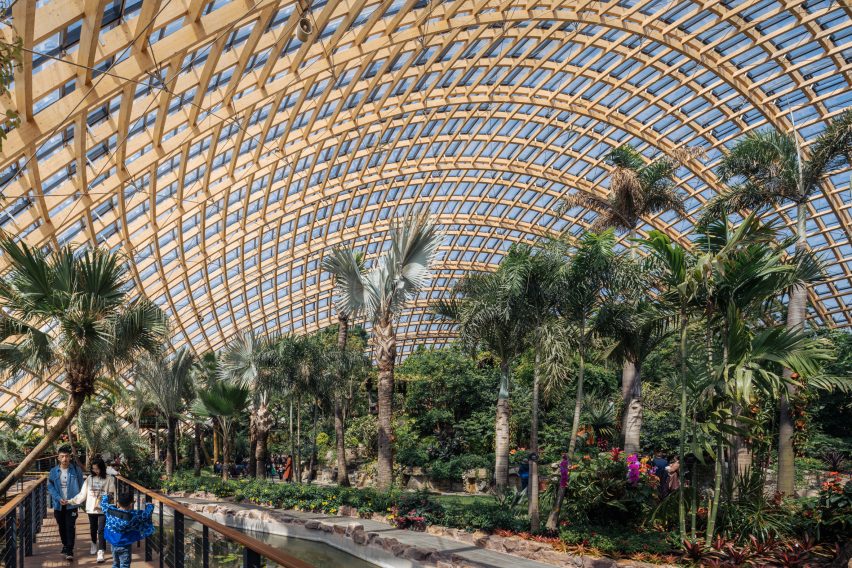
"The construction of the greenhouses required the pooling of technical know-how in the areas of energy design, thermal performance, structural integrity and glazing, as well as assembly and logistics," DMAA pointed out.
"With a free span of over 90 metres, the broadest of the three domes is one of the largest such timber-lattice structures worldwide."
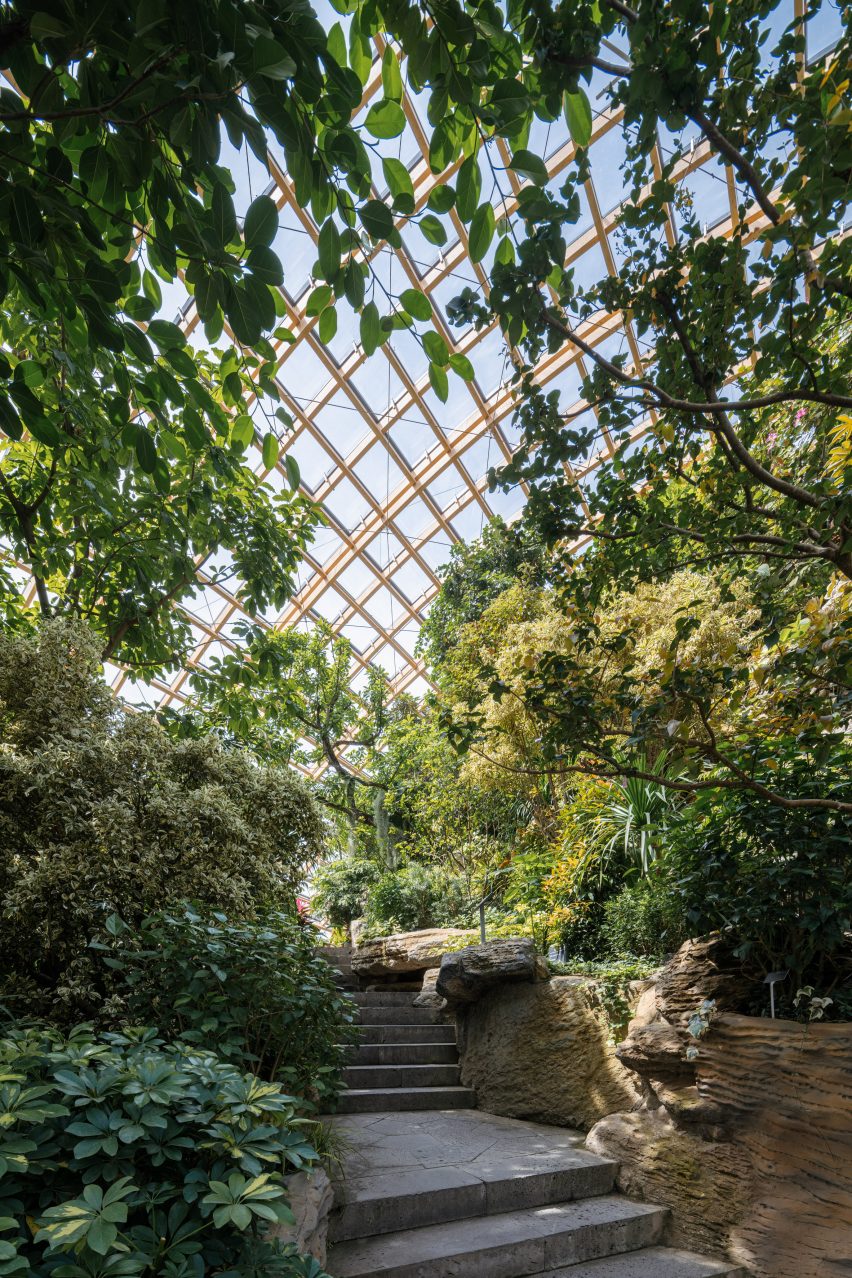
The largest dome contains the tropical garden, while the second pavilion recreates a desert environment. The smallest dome is positioned on the lake and houses a display of aquatic plants.
The greenhouses face south for maximum solar exposure throughout the year. Their timber-grid shell structures are denser on the northern side and more open on the southern side to optimise solar gain.
All three of the domes are glazed with double-curved glass and include openable windows that help to maintain the desired internal climates.
The entrance building is situated close to a main road and contains a lobby and reception area, alongside the natural history museum and other amenities.
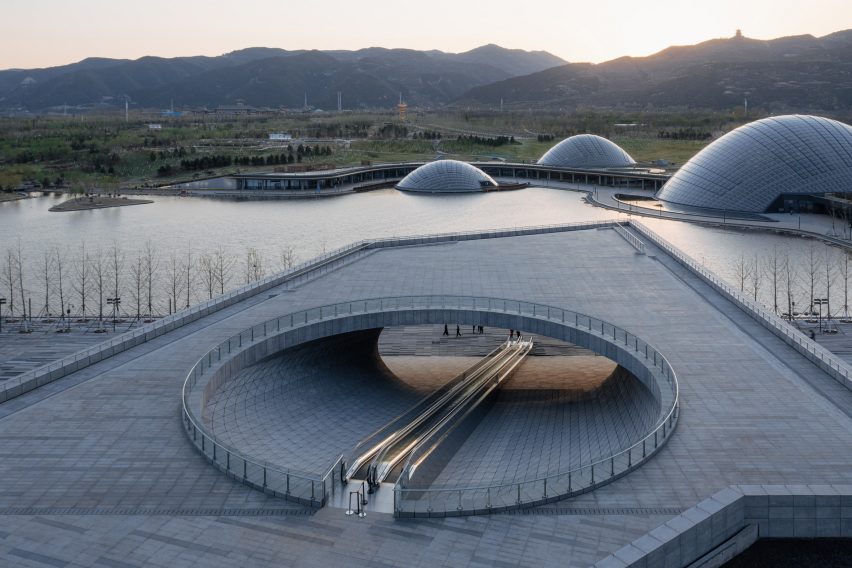
A moving walkway that extends through an opening in the entrance building's cantilevered roof transports visitors to a large terrace providing a panoramic view across the park.
Elsewhere on the site, a bonsai museum embedded into the landscape features terraces laid out in concentric circles that incorporate paths, ramps and stairs.
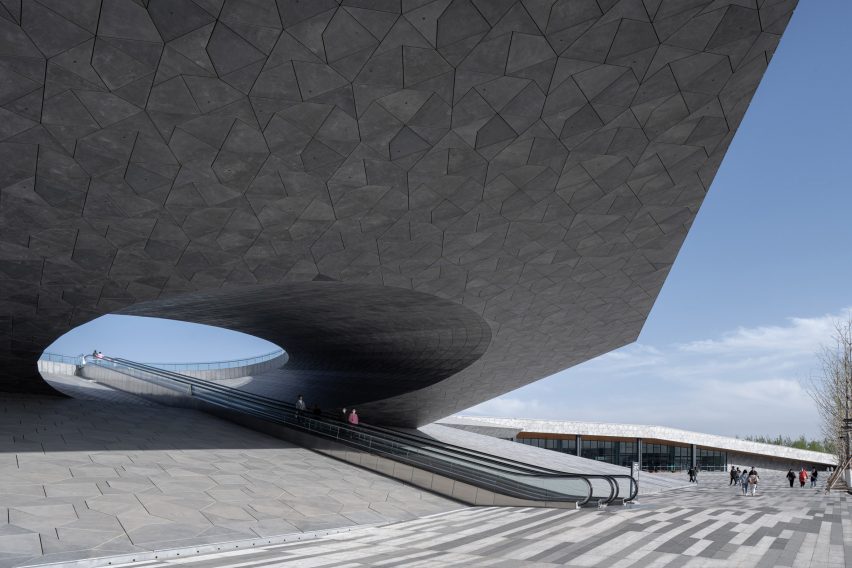
The restaurant and tea house building is positioned on an island in the lake to the south of the entrance and greenhouse. Full-height windows line the open interior, providing views across the water.
This building also features a latticed timber roof structure based on the design of traditional Chinese temples. Stacked wooden beams form a shifted grid that creates a complex geometric pattern.
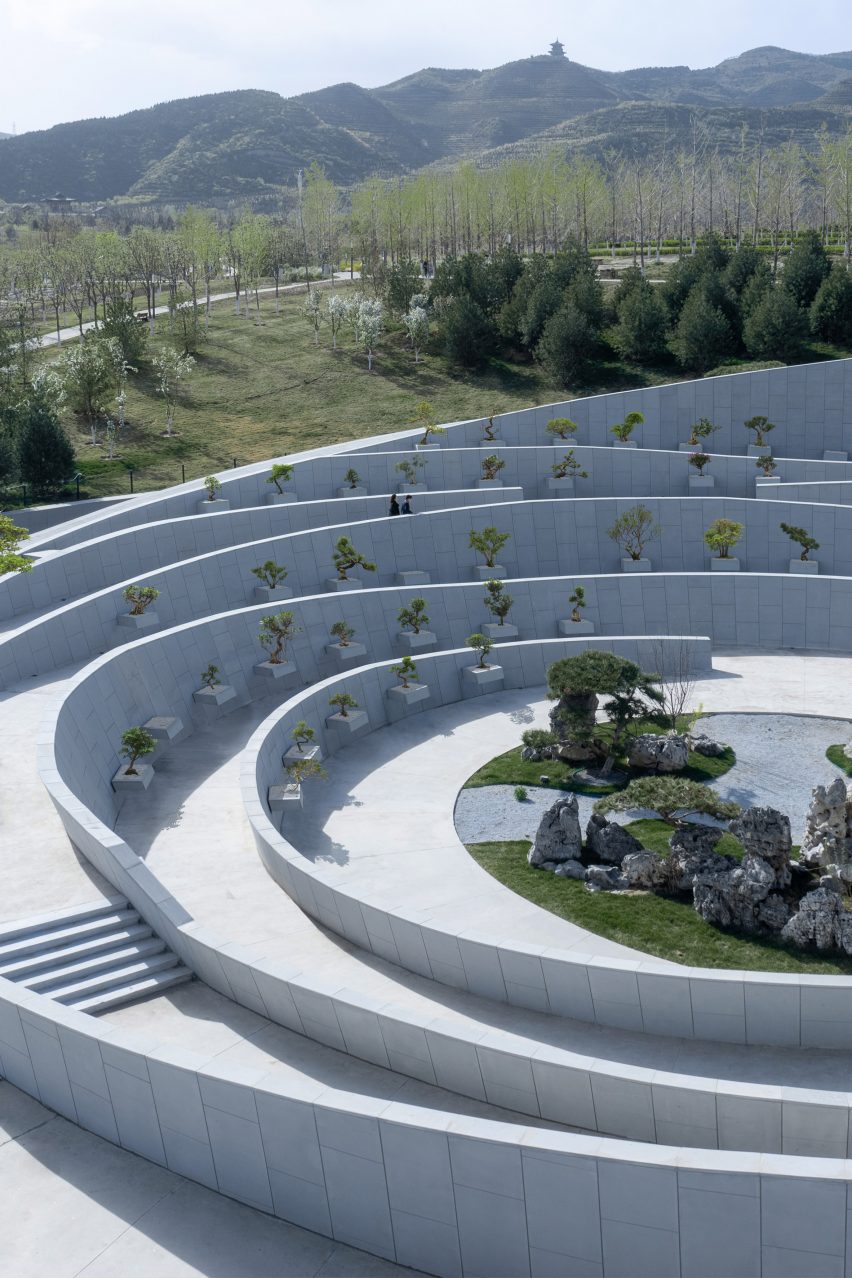
Landscaping across the 182-hectare site was designed by Munich-based firm Valentien+Valentien.
DMAA unveiled the plans for the Taiyuan Botanical Garden in 2016. The Viennese office, which was founded in 1993 by Elke Delugan-Meissl and Roman Delugan, is best known for high-profile cultural projects such as the Porsche Museum in Stuttgart.
The firm's other projects include an angular black concert hall in Erl, Austria, and a prototype for a modular housing unit clad in mirrors to help it blend into the surroundings.
Photography is by CreatAr.
Project credits:
Architecture: Delugan Meissl
Coordination: Yiju Ding
Structural engineering: Bollinger + Grohmann Ingenieure
Structural engineering timber structures: StructureCraft
Facade: Bollinger + Grohmann Ingenieure
HVACR electrics: Cody Energy Design
Landscape design: Valentien+Valentien Landschaftsarchitekten and Stadtplaner